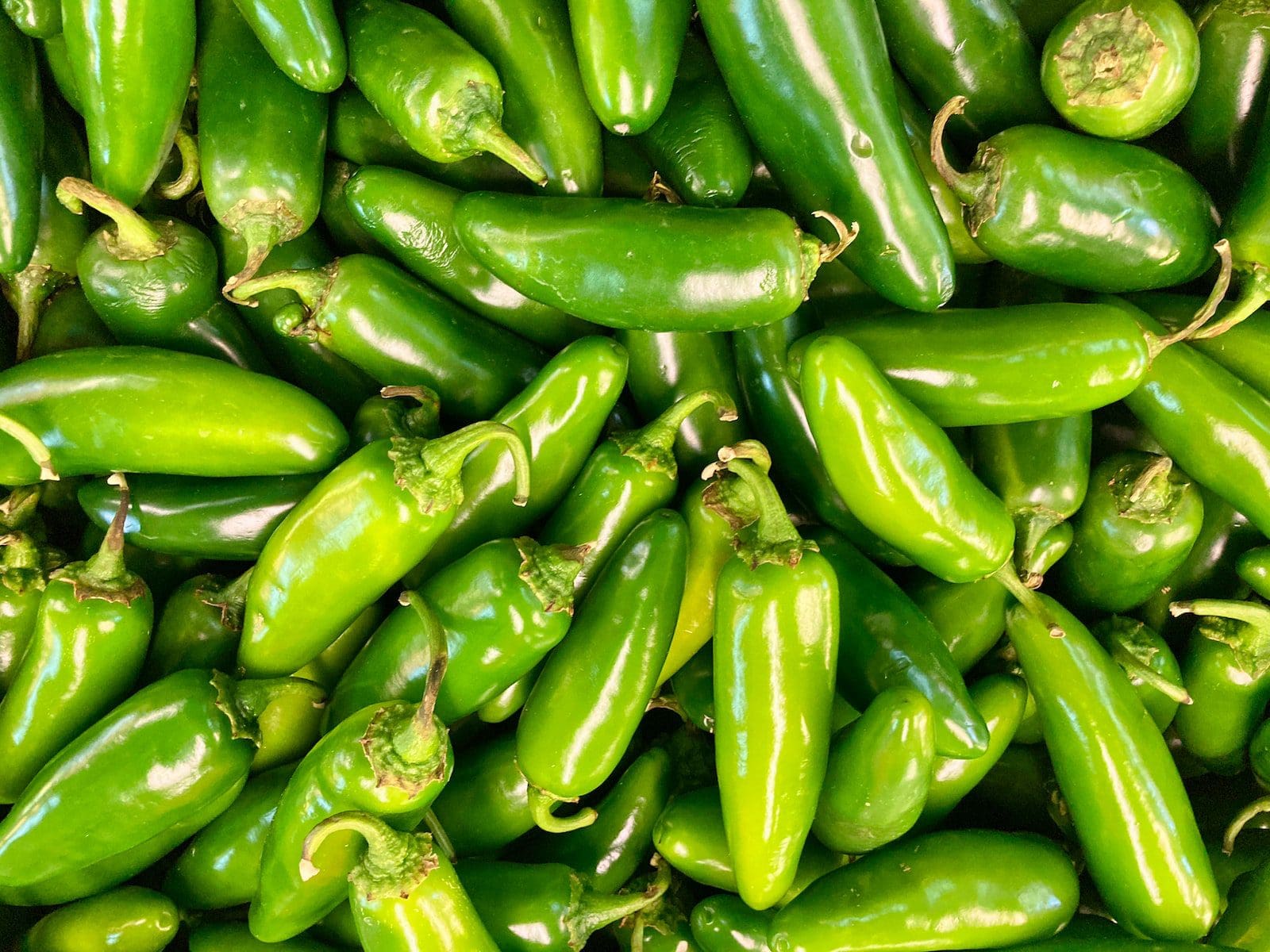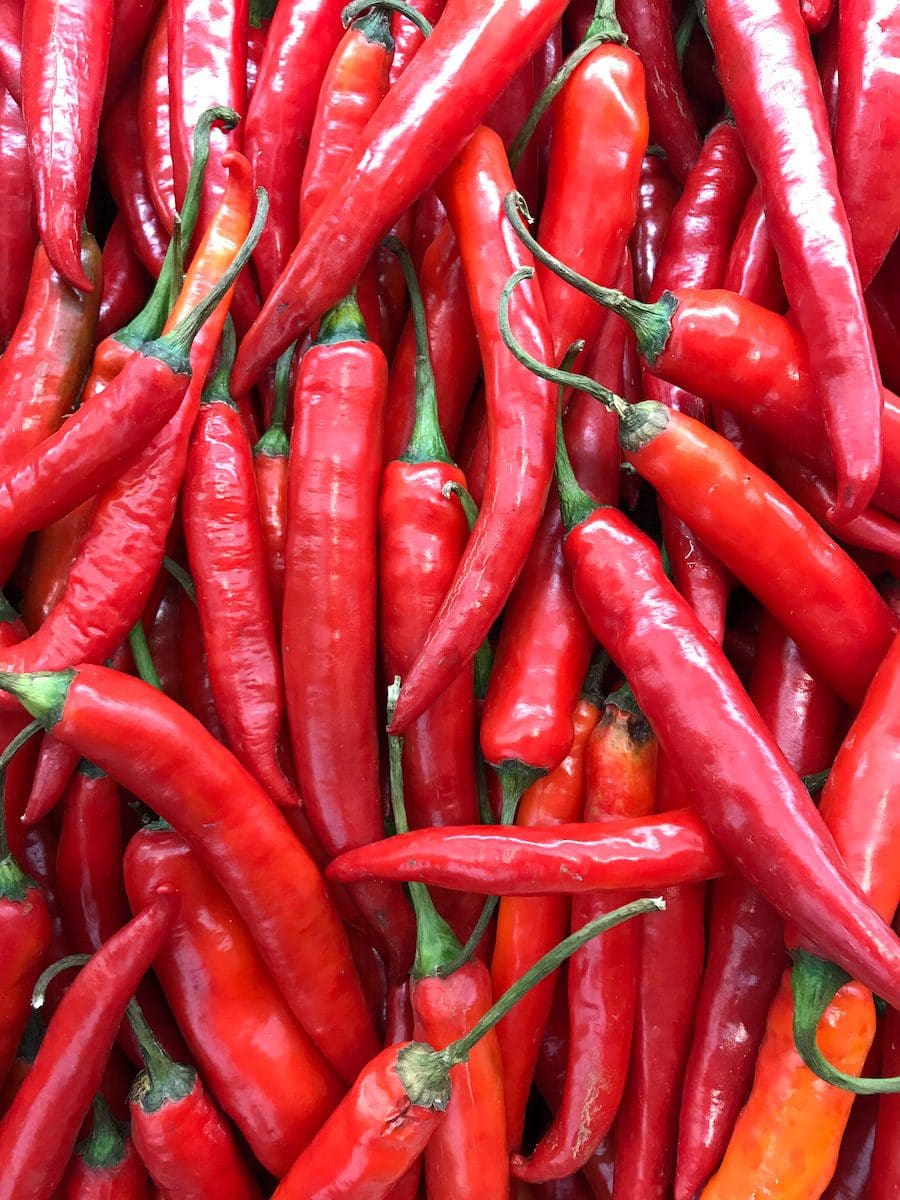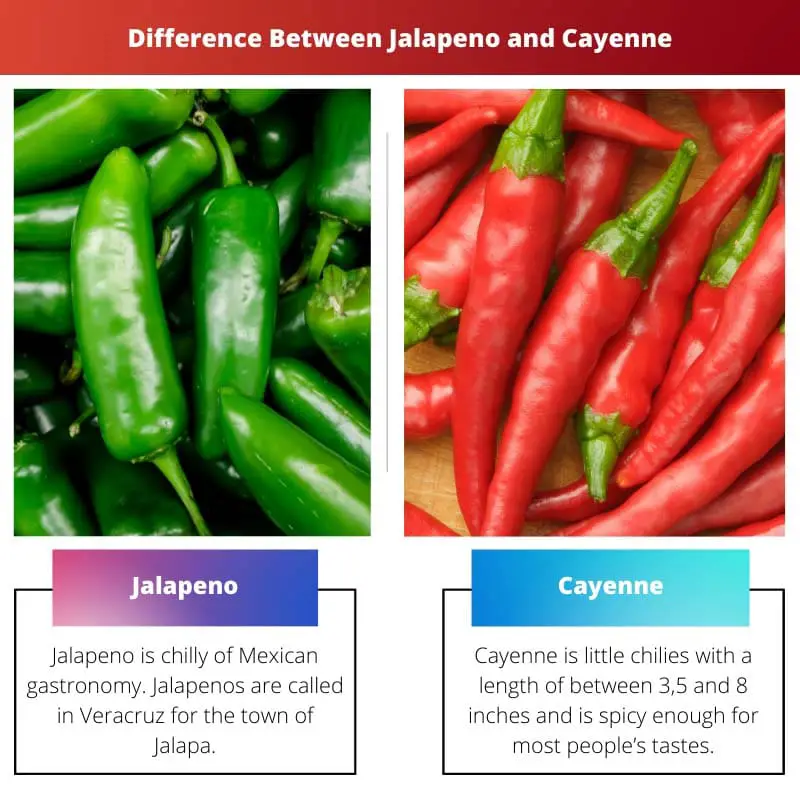There are five branches of the pepper tree, and the capsicum annum is made up of jalapeño and sweet bell pepper. Chillies are one of the oldest plantations in the world, farmed for up to 10,000 years, and originated in South and Central America.
Chillies are supposed to offer a large range of therapeutic qualities and be filled with nutritious goodness. It is said that the brain’s synthesis of natural opioids promotes Capsaicin, the alkaloid component that provides the veggies with their heat.
The idea of Christopher Columbus when he reached the Americas, he discovered an approach to India that led to two lasting aboriginal people dubbed “Indians” and chilis labelled “peppers.” The Spaniards went wild, while Portuguese seafarers disseminated seeds and chilis around the world.
Key Takeaways
- Jalapenos are milder than Cayenne peppers, known for their spiciness.
- Jalapenos are used in Mexican cuisine, while Cayenne peppers are used in dishes worldwide.
- While both peppers have health benefits, such as boosting metabolism, Jalapenos are also high in Vitamin C, while Cayenne peppers are a good source of Vitamin A.
Jalapeno vs Cayenne
The difference between Jalapeno and Cayenne is that the Capsicum annum-long group of Jalapeno peppers was born in Mexico, where peppers were utilized for religious rites and culinary spice. In Scoville, the majority of jalapeño peppers measure hotness between 3,500 and 8,000 units. A kind of Capsicum is Cayenne pepper. Usually, this pepper is somewhat spicy to taste.

Jalapeno is a Chile of Mexican gastronomy. Jalapenos are called in Veracruz for the town of Xalapa. Jalapenos are also significantly smaller on the Scoville scale, with a range of between 2 500 and 8,000 units, shorter and springier than cayenne.
Although the size of cayenne is significantly larger in Scoville, they would always be classified as ‘hot’ or its superlatives in terms of flavour. Cayenne is little chillies that have a length of between 3,5 and 8 inches and are spicy enough for most of the tastes of the people at 30,000 to 50,000 Scoville units.
India is both fresh and dried cayenne’s greatest consumer and exporter in the world. As India’s cheapest and most abundant Chile, cayenne is utilized for daily cooking.
Comparison Table
| Parameters of Comparison | Jalapeno | Cayenne |
|---|---|---|
| Meaning | Jalapeno is chilly of Mexican gastronomy. Jalapenos are called in Veracruz for the town of Jalapa. | Cayenne is little chilies with a length of between 3,5 and 8 inches and is spicy enough for most people’s tastes. |
| Heat | Medium | Hot |
| Origin | Mexico | French Guiana |
| Invented In | 1978 | 7000 years ago |
| Consume | Jalapeno peppers can be eaten whole because they are quite mild. | Cayenne peppers cannot be eaten whole because they are quite hot. |
What is Jalapeno?
Jalapenos, a nightshade family member alongside tomatoes, obtain their capsaicin spiciness from the eggplant, a chemical concentration in a pepper’s white pithy ribs. Like most heat peppers, the spiciness of jalapeños depends on several growth variables, including the quantity of the sun and the soil ph.
The Scoville scale of jalapeño peppers runs between 2,500 and 8,000. Mexican cuisine is most linked with the heat index of the poblanos and habaneros and is among the least costly of the fresh peppers of the food store.
Fresh jalapenos can be chopped, sliced, or diced, depending on your intended use. Put in a dressing of salsa or salad and a little dip to disperse the heat evenly. When you want to focus the heat onto a mouthful, like nachos, slice the jalapeño around.
By removing the ribs and seeds, you may lower the heat intensity. However, be careful when working with fresh Jalapenos. The oils may get on your fingers and make your eyes, nose, or other regions of sensitive skin uncomfortable.
Jalapeno peppers can be eaten whole because they are quite mild. Jalapenos are a popular pastry bar at Mexican restaurants in the US, filled with cheese, then breaded and deep-fried. Jalapenos can be pickled, used as condiments, and roasted for little sweetness and moderate heat.
Prepared in this fashion, the nachos and tacos are typical toppings. In addition, salsas, sauces, and bottled spicy sauces are commonly used in minced jalapeno.
Jalapeno peppers may be dried and smoked and called chipotles. Ground chipotles may be used as a spice, and in the Mexican cuisine department of the grocery store, adobo sauce can frequently be used to conserve chipotle, which adds spicy or smoky to the basic rice.

What is Cayenne?
In the Capsicum family, cayenne pepper is a spicy chilli. People use it to improve the taste of savoury foods, and pepper nutrients can be beneficial for their health. The jalapeno and bell peppers of the cayenne are closely connected with them.
Southwestern American, Mexican, Cajun, and Creole cuisine is one of the main products. They create a powdered seasoning spice and also offer Korean, Sichuan and other Asian cuisines dried and crushed.
Meanwhile, traditional Chinese and Ayurvedic practitioners utilize cayenne pepper in several ways, including addressing issues with circulation. The spiciness derives from the active component of pepper, capsaicin, which is included in several topical treatments for muscular dolour and pain.
Cayenne pepper comes from the Capsicum plant’s fruit in cooking to spice up your food. The taste of the tongue and eye-watering heat is frequently added to curries and soups.
Capsaicin, which is intended to come from Central America, is an alkaloid that promotes neurogenic inflammation and gives sensations of heat and pain. Capsaicin is a chemical that makes your tongue feel fired.
The heat unit scale of Cayenne is large. If you don’t know about this site, it’s the heat value each chilli is granted based on the capsaicin concentration. Bell peppers will have 0, jalapenos will give you 2,500, and cayenne will touch 30,000 to 50,000 incredibly. More than his heat or flexibility in the cooking is this colorful pepper.
High in antioxidants and other minerals, the cayenne contributes to health, well-being, and lifespan. It has thus been used for hundreds of years as traditional herbal medicine.
The health advantages of Cayenne pepper are broad and diverse. First of all, its high carotenoid content – an organic pigment with rich vitamin C – is the vivid red color of its pepper. Some of the health advantages of adding cayenne pepper to your diet are present.

Main Differences Between Jalapeno and Cayenne
- Jalapeno is eaten with pasta sauces, whereas cayenne is eaten with pizza.
- Jalapeno is medium in spice, whereas cayenne is hot in spice.
- Jalapeno is Mexican, whereas Cayenne is French Guiana.
- Jalapeno was discovered by the Aztecs, whereas Cayenne was discovered by Nicholas Culpeper.
- Jalapeno is a fruit, whereas cayenne is a vegetable fruit.

- https://dl.acm.org/doi/abs/10.1145/291251.289451
- https://www.sciencedirect.com/science/article/pii/030881469595790D

The differences between jalapenos and cayenne peppers are quite significant, particularly in their spiciness and usage in various cuisines. The comparison table provides a clear summary of this information.
The details about the heat intensity and heat index of jalapeños are quite informative. Similarly, the information about the uses of both jalapenos and cayenne peppers in cooking is very interesting.
The descriptive explanation of jalapenos as a member of the nightshade family and the spiciness they derive from capsaicin is very enlightening. Likewise, the uses of cayenne peppers in improving the taste of savory dishes are noteworthy.
The details about the synthesis of natural opioids by the brain in response to Capsaicin in jalapenos, and the differences between jalapenos and cayenne peppers in terms of heat, origin, and uses, are incredibly enlightening. The discussion on Indian consumption and export of cayenne peppers adds an interesting cultural perspective.
I find it fascinating that chillies have been farmed for over 10,000 years and have their origins in South and Central America. The discussion about Christopher Columbus’s discovery of peppers and its impact on the world is captivating.
The information about the impact of Columbus’s discovery of peppers and the spread of chilies around the world is thought-provoking. The detailed comparison between jalapenos and cayenne peppers provides valuable insights into their differences and uses.
The discussion on the different uses and preparations of jalapenos, from being pickled, roasted, dried, and smoked, gives a holistic view of how this pepper can be utilized in cooking. The insights into how cayenne peppers are used to add flavor to savory dishes are valuable as well.
Pepper tree branches and capsicum annum are interesting subjects. The historical and health background of chillies is definitely intriguing, and the comparison between jalapeños and cayenne peppers is very informative as well.
The information about the growth variables affecting the spiciness of jalapeños and the differences in their uses in various recipes is incredibly educational. The details about cayenne as a spicy chili and its popular use in Indian cooking are also compelling.
The historical background of chillies and their global impact, as well as the detailed information about jalapenos and cayenne peppers, are all fascinating. The comparison between the two peppers in terms of heat intensity, origin, and uses is very instructive.